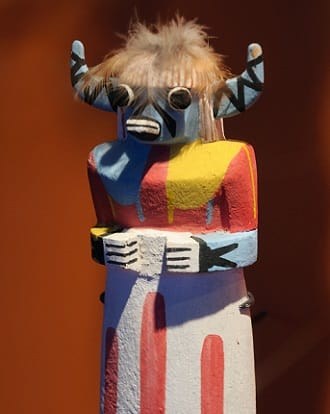
American Indian Doll Facts
The Native American art form of making dolls was a symbolic and culturally significant tradition held by many tribes throughout the US. Since they would often similarly dress the dolls like members of their own tribes, the dolls became an important means of recording Native American life. Two popular doll types were kachina and cornhusk. What materials did Native Americans use in making these dolls? How did they vary from tribe to tribe? The answers to these questions, as well as other interesting kid-friendly facts and information about American Indian dolls, can be found below.
Click here for a great selection of books about Native American dolls on AMAZONInteresting Facts about American Indian Dolls
- Native American children would often make dolls for the sole purpose of playing with them. Girls would donate their own hair for the dolls, while boys would skin animals and use the hide for clothing.
- Since available materials varied from tribe to tribe, the material used to make the dolls would also vary. Almost every Indian tribe has included doll making as part of their art.
- Dolls with hide dresses and moccasins adorned with beads were typical of 19th-century Plains Indian dolls. Some Northern Plains Indian tribes would use metal to construct the dolls, while Crow Indian dolls were sometimes made of wood or cloth. Inuit dolls were often dressed in fur, while palmetto leaves were used to make dolls in the Seminole tribe.
Native American Indian Kachina (Katsina) Dolls
- Kachina dolls were carved from wood and were painted with different colors and decorations.
- The Hopi Indians were the first Native Americans to create the Kachina dolls. They were made to represent different spirits and were given to children to help them understand the significance of each spirit.
- There were many different types of Kachina dolls to represent the many different spiritual, religious, and cultural aspects of Native American Indian life.
- During annual ceremonies, males would dance and impersonate the various kachinas while wearing masks. Some kachinas were gods, some were animals, and some were even deceased tribal members. During the ceremony, children would receive kachina dolls of their own as well as other offerings such as sweets and rattles.
Native American Indian Cornhusk Dolls
- Cornhusk dolls date back over 1,000 years to when Northeastern Native Americans began harvesting corn.
- These dolls were used as both playthings and in spiritual ceremonies. They were also placed in medicine bags as sacred items.
- Cornhusk dolls were made in both sexes and given accessories which were appropriate for each sex. For example, males would carry canoe paddles, bows and arrows and other weapons. Female dolls would sometimes carry sewing kits, cradle boards and even small tools.
- Some cornhusk dolls were basic stick figures, while others were elaborate and detailed with full dress. An interesting fact is that none of the cornhusk dolls have faces; there are many stories to suggest why, but no definite answer is available.
- After being soaked in water, cornhusks were braided or rolled to create the arms and legs of the dolls. The hair was made with corn silk, horsehair, yarn, or human hair.
- The size of the cornhusk dolls varied anywhere from four to ten inches in height.